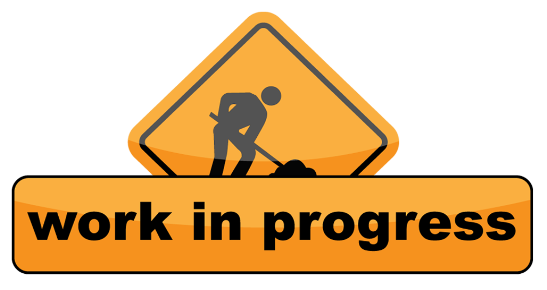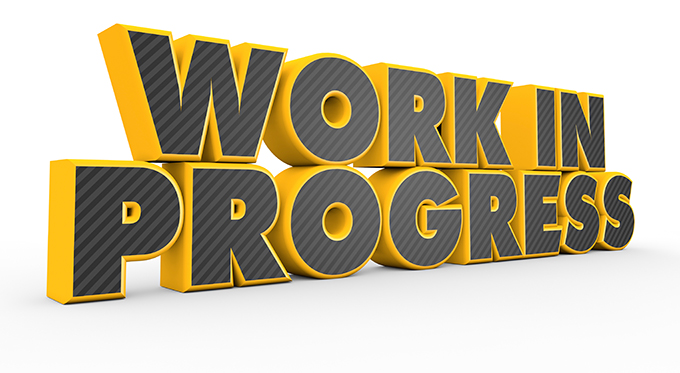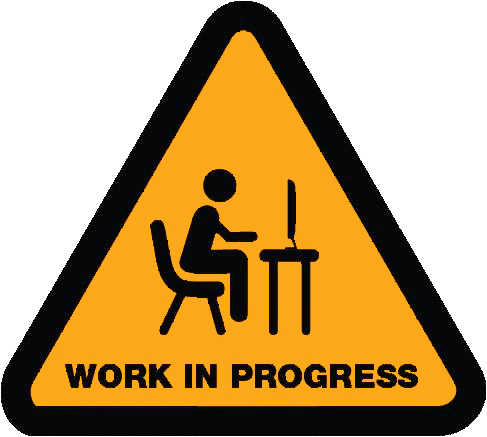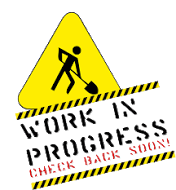Disparate Impact
"Disparate impact" theory: if minorities fail tests at a higher rate than whites, it's the test that's wrong.
"Disparate impact" allows for claims of racial discrimination when a policy or procedure leads to racially disproportionate results even if that policy or procedure was established without discriminatory intent.
Legally, "disparate impact" is a term of art coined in Griggs vs. Duke Power, 1971, which, to use Wikipedia's summary
"The Court ruled against a procedure used by the company when selecting employees for internal transfer and promotion to certain positions, namely requiring a high school education and certain scores on broad aptitude tests. African-American applicants, less likely to hold a high school diploma and averaging lower scores on the aptitude tests, were selected at a much lower rate for these positions compared to white candidates"
Or, to use my summary, "The message of Griggs and "disparate impact" theory: if minorities fail tests at a higher rate than whites, it's the test that's wrong."
Article reprinted with permission from VDARE
John Derbyshire called Griggs one the "two body blows against the USA in the past half century"—the other being the Immigration Act of 1965. He said that Griggs
"[E]ssentially rules that Title VII of the 1964 Civil Rights Act forbids employers giving aptitude tests to prospective hires. In other words, it forbids an employer from trying to find out how smart you are before hiring you. "[Will the United States Survive Until 2022?, New English Review, January 2007]
This gives the Equal Employment Opportunity Commission (EEOC) tremendous power to mess up both civil service and private sector hiring, requiring them to hire ex-convicts and people with incomprehensible accents, because they're more likely to be members of minority groups. It also creates terrible problems for police and fire departments trying write civil service tests—there is no known test that blacks will pass at the same rate as whites. And it leads to lengthy court battles.
But there's a second kind of "disparate impact", where the failings of minorities are used to blame American laws and lawmakers for racism. Here are some examples:
Felon Enfranchisement—felons cant vote in many states. Democrats want them to be able to vote. This is disparate because more blacks are felons, color blind in the sense that people don't want white felons voting.
Seat Belt Laws—disparate because blacks buckle up less often than whites, so if a state doesn't have tough seatbelt laws, more blacks get hurt. Not the lawmakers' fault, and when seatbelt laws are enforced, its racial profiling.
Credit Ratings—insurance companies that set rates based partly on credit ratings are disparately affecting blacks. Do you really think insurance companies want to give white people, or any people at all, a break?
Slums—the idea that an anti-crowding ordinance trying to prevent 10 unrelated laborers from sharing a two-bedroom apartment "targets families based on their nationality." Disparate because Americans don't want to live that way, but Mexicans do.
Menthol Cigarettes—this one is weird. Black people smoke menthol cigarettes because they like them. A matter of personal taste, like Texans and chicken-fried steak. That means that the tobacco companies are accused of "marketing to them" and this is bad because "the soothing effect of menthol enables deeper inhaling, menthol cigarettes have a disparate impact on black smokers health." A lawsuit based on that idea was filed under the Civil Rights Acts of 1866 and 1870. Who the Texans are supposed to sue for chicken-fried steak, I can't say.
Statehood for the District of Columbia—Obviously, the federal status of the District comes from the Constitution, but because blacks are the majority of DC's population, not making them a state is considered racist. I'd merely like to add I distinctly recall that blacks moved to DC in the pre-civil rights era specifically to escape States' Rights, and that the decline in the white population of the district was caused by black crime.
Teacher Competence—blacks and Hispanics pass these tests at a lower rate than whites. But people don't want their kids taught by stupid white teachers either.
Mortgage Lending—fewer blacks per capita can qualify for mortgages, and this is considered racist. Peter Brimelow pointed out in 1993 that default rates tended to be the same, which means that banks were using color-blind measures of ability to repay (banks want to lend money, but of course, they want it back, too). But still, recently John Edwards was crying "racism" at the idea that blacks pay higher rates on average.
Theres a pattern here—any standard at all that Americans may want to maintain is considered to be racist if minorities, on average, don't measure up. Broader examples would include
The whole idea, popular in the 70s, that "law and order" was a "code word" for bigotry.
The similar idea, twenty or thirty years later, that Giuliani's war on crime in New York was caused by the same bigotry. But really, the experience of crime in the nineteenth century and later during Prohibition showed that people really didn't enjoy being robbed and beaten by white criminals.
The idea, promoted by Linda Chavez, that "immigration enforcement" is a code word for similar bigotry. But earlier mass immigration of Irish and Italians showed that whites could be just as disruptive. Besides, is America responsible for the fact that its Mexico that's next door to the U.S., or for the fact that the Mexican caste system makes for more Mexican Indians wanting to leave the country?
So this whole "disparate impact" idea is all part of what we call "Abolishing America". [Continue at Disparate Impact: Legal And Political]
“Disparate Impact”and Housing
The legal theory of disparate impact, created by the Supreme Court in the 1971 case of Griggs v. Duke Power, allows for claims of racial discrimination when a policy or procedure leads to racially disproportionate results even if that policy or procedure was established without discriminatory intent.
In 1955, the Duke Power Company, a North Carolina utility, established a rule that required applicants for certain jobs be high school graduates or score at the level of the average high school graduate on an intelligence test and a mechanical comprehension test. No one ever argued that the intent of this rule was to exclude blacks, but its result was to exclude more black than white applicants. The Supreme Court ruled that requiring a high school diploma or certain test scores had a “disparate impact” on blacks, since they were less likely to be high school graduates and tended to get lower scores on the tests. This was therefore illegal discrimination.
Differences in IQ, crime between races parsimoniously explain such disparate outcomes.
See also The Emperor has no Clothes: Anti-Racism is obviously false
Science has clearly disproven the equality dogma: (all races are equal), and Universalism. IQ differences also explain why East Asians and Jews have more success and income than white Caucasian Gentiles (non-Jews).
East Asians, the model minority (IQ ~ 105)
Asian Privilege: Japanese, Korean, Chinese surpass Whites
Disparate impact legal doctrine thus is nothing but unjustified institutionalized unequal treatment that privileges "underprivileged minorities" such as Blacks.
See also Parsimony: Occam's razor
Study Finds That School Zero-Tolerance Discipline Policies Do More Harm Than Good
Dr. Curran writes in the article that “the study showed that state laws requiring schools to have zero tolerance policies increased suspension rates for all students. Second, suspension rates increased at a higher rate for African-American students, potentially contributing to racial disparities in discipline.
Of course. Probably because Afrian American Students are more unruly. After all, they commit more crimes
See also Race differences in crime
Average IQ of college graduates by decade of graduation
The mean IQ scores, converted from GSS wordsum results, assuming a national average of 98 and a standard deviation of 15, of those who attended college for at least four years by the decade they graduated in* (n = 5,124, though n for 2010s is only 49 and should be seen as merely suggestive--the trend is clear regardless):
Graduated in IQ 1960s 112.3 1970s 109.1 1980s 106.0 1990s 103.9 2000s 102.9 2010s 100.0
The change in the intelligence of the average college graduate over the last fifty years approaches the IQ gap separating whites and blacks.
This is an inevitable consequence of increasing the share of the population that attends college. In the sixties, 10% of American adults had college degrees. Since then that figure has more than tripled, to 33% today. [...]
Mil-Tech Bard said... (in a comment)
A.E.
You are measuring returns incorrectly here. The demand for college degrees for a job is the only employment requirement that you can use to screen out low IQ NAM and not lose a suit in Federal courts.
Over education is all about finding a way to avoid legal liability underthe "disparate impact" doctrine
Legally, other than using a requirement for a college degree, any method of choosing -- including strict merit -- that results in fewer minority hires is considered racial discrimination by the courts under the "disparate impact," doctrine. Especially if it involves 'African Americans.'
The other practical exception is not hiring the long term unemployed. It is just a whole lot harder to prove "disparate impact" in federal court with the long term unemployed _right now_ because as a class they reflect lower working classes.
IOW, if there are enough white victims of long term unemployment with the African Americans & Latinos, those conducting that kind of job screening are safe...until Dem judges or a Dem plus RINO majority in the House get gulled into making "long term unemployed" a protected hiring class.
The key point is that once a plaintiff member of a protected class proves disparate impact against his/her class, the burden of proof shifts to the defendant, here an employer, to prove that the challenged policy is reasonable on grounds other than unlawful discrimination against the protected class.
This is not easy to do, and costs horrendously in legal fees even if the defendant wins.
Plus we have all those leftie NGO's and charitable foundations which will fund class action litigation with little or no merit, so employers really are in deep trouble here.
It gets worse, this is the whole object of Title IX litigation against schools about purported discrimination against females. It doesn't matter that females want to participate in competitive athletics at only 10% the rate of males. Giving male sports programs more funding than female programs makes schools automatically in the wrong unless they get lucky, and they have to eat all their defense attorney fees even if they win.
Plus they can be sued over and over again for each different sport, and the plaintiffs' bar only has to win once. This is why school competitive athletic programs are being cut entirely.
Males who want to play competitive academic athletics are being discriminated against because females are far less interested in participating in those.
The disparate impact doctrine is wrecking the country in all sorts of ways.
4/29/17, 2:36 PM



https://www.nationalaffairs.com/publications/detail/the-dead-end-of-disparate-impact
https://www.unz.com/isteve/amy-wax-iron-law-of-personnel-selection/
The bottom line, therefore, is that most employers who engage in genuinely meritocratic skill-based hiring using a broad range of valid personnel practices will fail to meet the disparate-impact doctrine’s threshold diversity targets. Indeed, as IOP experts Paul Sackett and Jill Ellingson have observed, most employers have no hope of even coming close to satisfying the Griggs four-fifths requirement. Group performance differences, or d values, commonly viewed as small — for example, 0.2, which is far lower than the one standard deviation black-white difference in pure tests of cognitive ability — can produce violations of the four-fifths rule in even modestly competitive hiring situations. This means that businesses that strive to hire the best workers will routinely violate the four-fifths proportionality rule for minority hires and thus expose themselves to potential disparate-impact challenges.
content here
 Racism is Love
Racism is Love 




